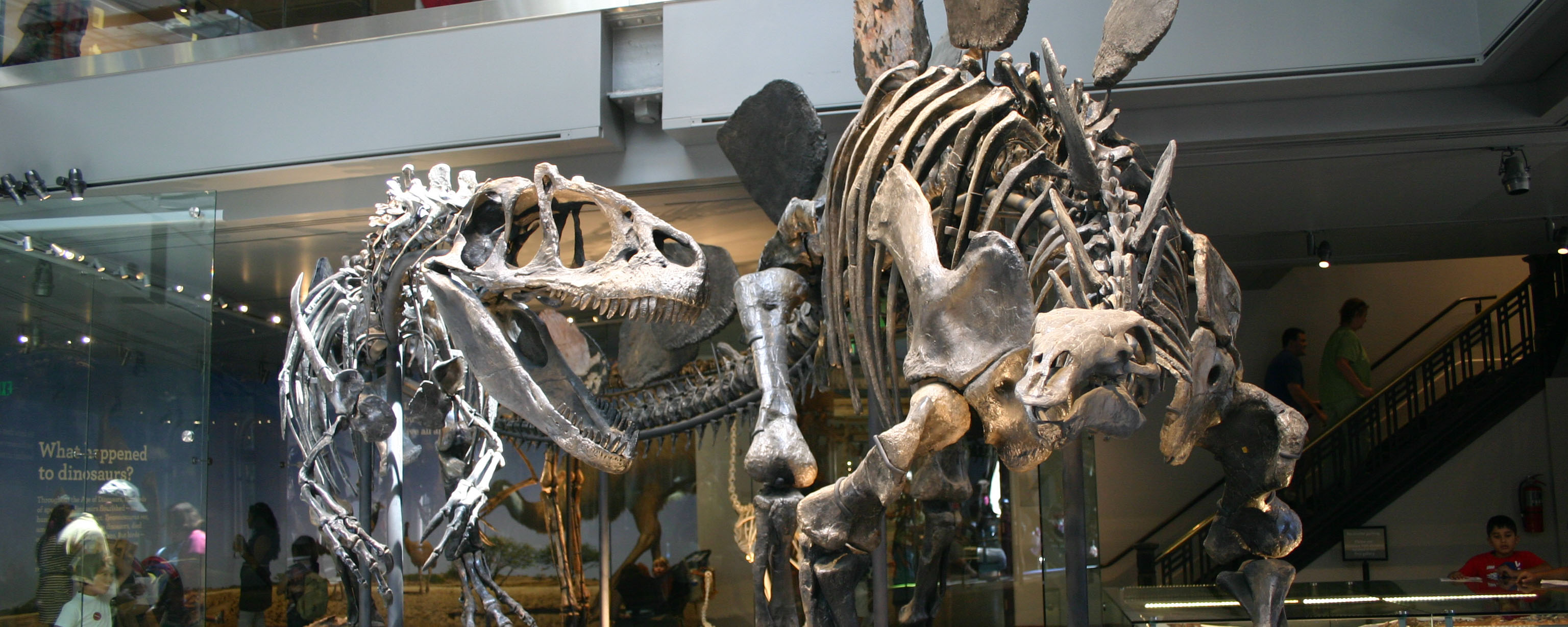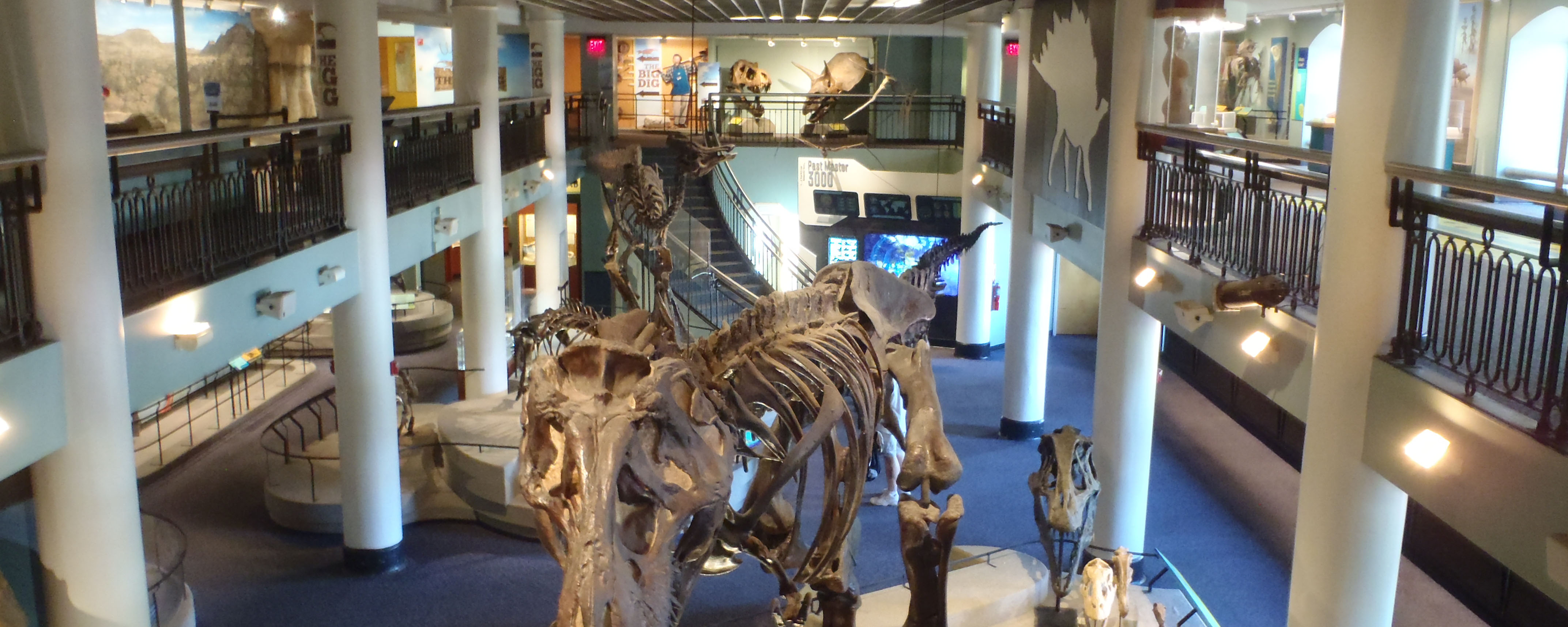


Key Points:
•"Dinosaur" is not simply a term for any vanished giant reptilian creature. It refers specifically to "any member of Dinosauria".
•Dinosauria is a particular branch of the "reptile" (sauropsid) family tree. Not all dinosaurs were large, scaly, or even extinct!
•Living birds are the (only) surviving part of Dinosauria.
•Extinct dinosaurs are known only from their fossils (physical remains of their body parts or traces of their behavior preserved in the rocks), but these have been found on every continent.
•Through the study of dinosaurs, we can learn about: how rocks form; how environments and living things change through time; how animals behave, grow, and function; how parts of ecosystems interrelate; and how mass extinctions driven by large-scale rapid environmental changes can radically alter the diversity of life.
Goals of this course:
Learning Outcomes: By the end of the semester, every student should be able to:
Dinosaur science is NOT archaeology! Archaeology is the study of human artifacts and remains; in contrast, the study of ancient life and its remains (fossils) is paleontology, the study of ancient life and their remains (fossils). Fossils (from Latin fossilium "that which is dug up") are the physical remains of past life and its activities preserved in the rock record.
More specifically, the study of dinosaurs is a subset of vertebrate paleontology, the study of ancient backboned animals. The majority of paleontologists, or even of vertebrate paleontologists, are NOT dinosaur researchers!
Dinosaur fossils have been found in Mesozoic Era rocks from every continent, including Antarctica.
There are many types of dinosaur fossils:
The word "Dinosauria" (and hence "dinosaur") was coined in 1842 by Sir Richard Owen:
Owen recognized 3 different dinosaurs:
Saw that they were different from other fossil (and modern) reptiles because of:
Dinosauria is now recognized as a single major group of organisms, all descendants of a common ancestor.
Modern Definition of Dinosauria:
Thus, dinosaurs are not just "any fossil animals" or "all fossil reptiles" or "all fossil reptiles of the Mesozoic" or "all giant fossil reptiles of the Mesozoic." Instead, they are specific branch of the Tree of Life.
More Information about the Definition of "Dinosauria": You will find several different operational definitions for "Dinosauria" out there. Up until Spring 2017 we only used two names to "anchor" the group. Often these were Megalosaurus and Iguanodon (two of the first dinosaurs recognized by Science), but others substituted Passer (the Eurasian sparrow) and Triceratops for these. The result would be the same part of the family tree of life. However, I prefer the one that uses the original discoveries, as this honors the original conception of Dinosauria by Owen and does not use anchors which were either unknown to him (Triceratops) or would not have been regarded as dinosaurs at the time (Passer). It also reflects the history of paleontology, in that birds become dinosaurs due to our discovery of their place in the larger Tree of Life rather than forcing ("pigeon-holing"? :-) ) them into Dinosauria by definition.
The inclusion of Diplodocus (or other member of the long-necked plant-eaters, such as Cetiosaurus or Camarasaurus) as an anchor is necessary due to recent complications over the basic structure of the dinosaur family tree. We'll address this issue later in the course.
In order to understand dinosaurs, we will have to explore various types of scientific information:
Once we have understood these, we'll look at the dinosaurs themselves: where they came from; how the rose from small-bodied animals to being the dominant land animals; how the different groups lived, fed, and diversified; how they may have behaved, courted, raised their young; how (some of them) got so amazingly big; and whether or not they were "warm-blooded". We will look at the origin of birds, and how we can (and can't) use information from living birds to interpret the biology of dinosaurs. We will look at the contemporaries of dinosaurs, especially their flying cousins the pterosaurs, the various marine reptiles that swam the Mesozoic seas, the rise of our own group (the mammals), and the flowering plants. We will see how the Age of Dinosaurs came to an end, and how different lines of evidence are used to see how the extinction at the end of the Cretaceous happened.
But before all of that, we'll look at how the process of Science works, and then at how using that process our knowledge of dinosaurs has changed over the last two centuries.
To Next Lecture.
To Lecture Schedule.
